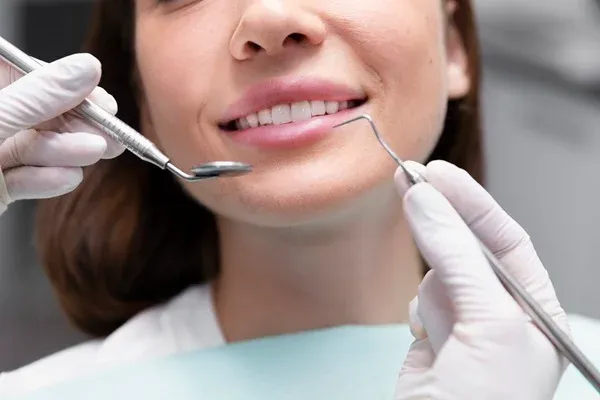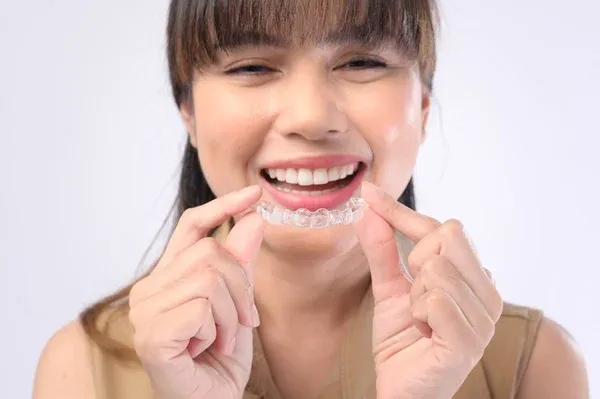Invisalign Treatment Process: Step-by-Step Overview
Are you considering Invisalign treatment and want to know more about the process? In this comprehensive guide, we'll provide a step-by-step overview of what to expect during your Invisalign treatment journey. From the initial consultation to the results, we'll cover everything you need to know about the Invisalign treatment process.
Initial Consultation
The first part of the treatment process is a visit with a qualified professional Invisalign treatment provider, followed by instructions on how to put on and remove the appliances. This appointment will allow you to forge a treatment plan based on Invisalign or other options that will set you on the path to fixing your teeth.
Finding a Certified Invisalign Provider
To start with, you should seek a qualified orthodontist or dental practitioner who is knowledgeable in Invisalign treatments and has prior experience in this endeavor. You can first try to seek advice from friends or relatives, search the web for more information, or use the Invisalign provider locator on the website. It is crucial to select a trusted provider for the best outcomes.
What to Expect During the First Visit
During your initial consultation, you can expect the following:
- Medical and Dental History Review: Your dentist will evaluate your dental and medical records to determine your overall health and any factors influencing your treatment.
- Oral Examination: During the examination, the dentist will evaluate your dental status and check your gum condition and your bite to determine your orthodontic needs. The provider will search for problems like crowding, flaws, overbite, underbite, and so on.

- Discussion of Goals: The solution to the topic will be about your expectations about teeth appearance, and you will talk about any specific concerns you have related to your teeth.
- Digital Scanning and Impressions: You will be assessed by a proper clinician to ensure you are eligible for Invisalign, after which the clinician will use digital scans or suction impressions of your teeth. They will be able to do that by creating a detailed 3D image of your teeth using a technology called scans. Later, this image will be used to design your custom aligners.
- Treatment Plan Overview: This will be determined by the scans and the orthodontic problems that you have. The plan will be presented as the answer to what you need to achieve your desired look. This plan will tell you about the estimated duration of your treatment again, the number of aligners that you should change, and the impact on your finances.
Custom Treatment Plan
After your first meeting, your Invisalign journey proceeds with a customized plan created specifically for you, considering all your orthodontic issues.
Digital Scanning and Impressions
- Digital Scanning: Your dentist will use 3D scanning devices with highly advanced technology to obtain a detailed illustration of your teeth. The scanner scans to produce a digital model of your mouth, which is more comfortable than a traditional impression mold mainly because of precision.
Developing a Personalized Treatment Plan
The dentist will create detailed pictures of what your exact teeth look like to help design a plan for all Invisalign treatment phases to use in the treatment process. This plan includes:
- 3D Treatment Simulation: Through Invisalign's proprietary computer software, the dentist will generate a visualization of your teeth's movements during the treatment plan. The simulation gets you to visualize the virtual representation of the teeth movement stages and the envisioned aesthetic result.
- Stages of Treatment: Your treatment is divided into phases, each fitted with a different set of aligners. The aligners are designed to fit your teeth‘s shape and make minor adjustments to the positioning, which, over time, will lead to larger misalignments being fixed.
- Treatment Duration: A treatment plan will predict your total treatment time and the number of months to years, depending on the complexity of the case. The team will help you understand each treatment stage.
- Number of Aligners: You will understand the rough number of aligners you will need throughout this treatment. Each patient usually wears the aligner for about two weeks before moving on to the next tracer in the series.
Reviewing and Approving the Plan
Before proceeding with your treatment plan, you will give your review of the proposed plan. This review includes:
- Expected Outcomes: Viewing the 3D simulation helps you understand the changes your teeth will undergo and the results you can expect.
- Adjustments to the Plan: If you have any concerns or specific preferences, this is the time to discuss them with your provider. They can adjust the treatment plan to better meet your needs.
- Final Approval: Once you are satisfied with the proposed plan, you will be approved to proceed. Your provider will then order your custom aligners from Invisalign.
Moving Forward
With the treatment plan of your choice, take a step forward and prepare to begin treatment. The molds of your aligners will be fabricated, and the devices will be delivered to your certified provider, who will give you instructions on properly wearing and storing the aligners.
Receiving Your Aligners
As long as you work with your doctor to create a customized treatment plan and get aligners made based on that plan, the following step of your Invisalign journey is receiving your aligners and then beginning to wear them. This first segment marks the start of the active treatment process.

How Invisalign is made
Making Invisalign aligners is an advanced 3D printing technology that uses the scans (or impressions) taken during the initial consultation to design the aligners. They do this by making aligners out of a BPA-free plastic that is not only smooth but also very comfortable and invisible.
What to Expect When You Get Your First Set of Aligners
When you receive your first set of aligners, your provider will guide you through several important steps:
- Fitting the Aligners: Your practitioner will ensure that those aligners are designed precisely for your mouth using special tools beforehand and that they will adjust as needed. The aligners should be comfortably snug over your teeth, though you shouldn't experience soreness.
- Wearing Instructions: Your dentist will issue you a very specific set of directions that will help you keep your aligners on properly. Primarily, aligners need to be worn for about 20-22 hours daily to function correctly except when they are removed for consumption, drinking (other than water), brushing, and flossing.
- Changing Aligners: Your provider will describe how changing your aligners every two weeks gets done. So, each pair of aligners will keep your teeth in the right position each week.
- Caring for Your Aligners: You will learn to wash your aligners daily using a toothbrush with mild soap or Invisalign cleaning crystals. Use cold water and avoid hot water, as hot water may distort the plastic shape.
Tips for Getting Started
Adapting to Invisalign aligners is not easy. Here are some tips to help you get started:
- Practice Insertion and Removal: Placing and removing Invisalign aligners can be a bit tricky in the first few days. Use a mirror and keep on practicing until you are sure that you can do it smoothly.
- Managing Initial Discomfort: In some brief instances, you may feel irritation or pressure as you apply new aligners. This indicates that the aligners are doing their job, as it is likely clear evidence that the teeth have begun to shift.
- Speaking with Aligners: It might be that you develop a light lisp when you start your aligner journey. Train yourself to articulate yourself explicitly when addressing others. For most people, this usually happens after a few days.
Follow-Up Appointments
Your provider will schedule frequent follow-up appointments, about once every 6-8 weeks, to keep track of your improvement and give you the following sets of aligners. In these scheduled checkups, your dentist will follow the retreatment process by checking if your teeth fit their plan and making any changes if necessary.
Staying on Track
Ensuring that you wear your aligners for as long as advised and changing them according to the provider's guidelines will be major contributing factors to the result you get in the end. Set reminders to change your aligners on schedule and keep them in a protective case when not in use to prevent loss or damage.
Contact your Danville dentist, Dr. Hoss Abar, DDS, MSD, at Danville Orthodontics to learn more about Invisalign treatment.
Resource:
*Neither this nor any other content in this media is meant to prescribe, recommend, or prevent any treatment or procedure. We highly suggest that you get the advice of a qualified dentist or other medical practitioners regarding your specific dental condition.
